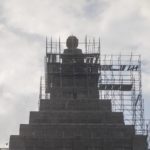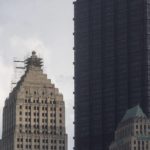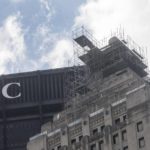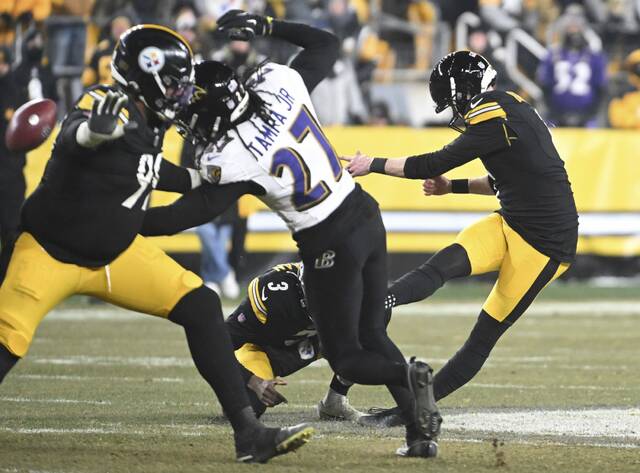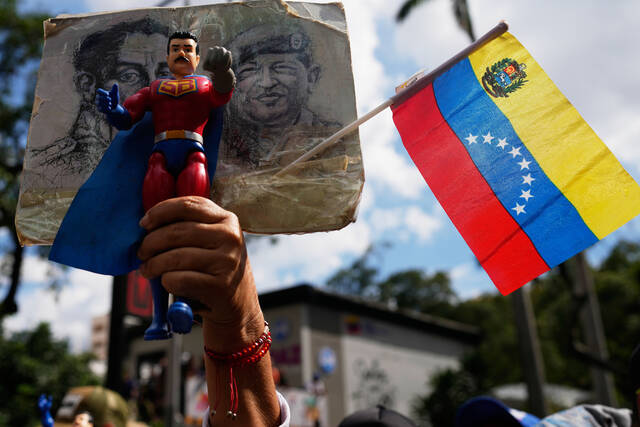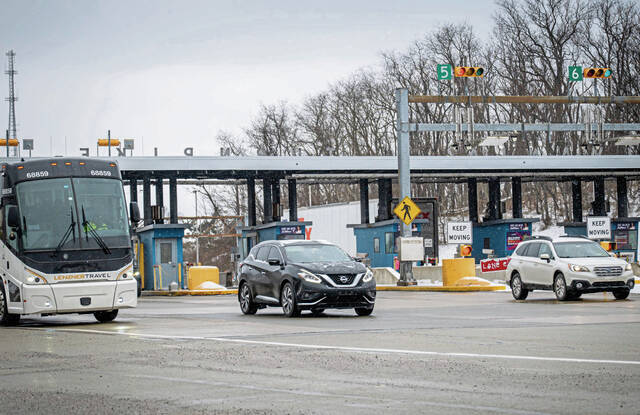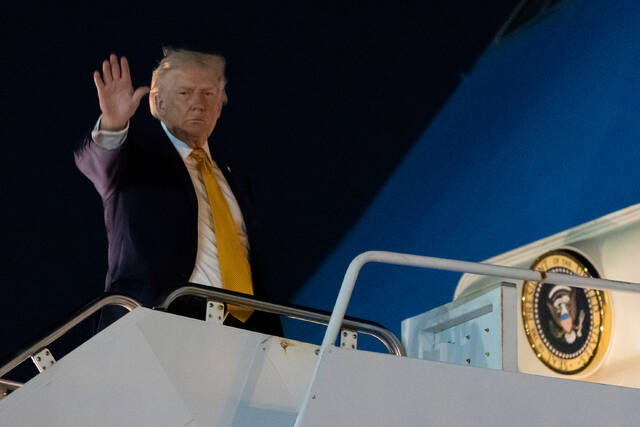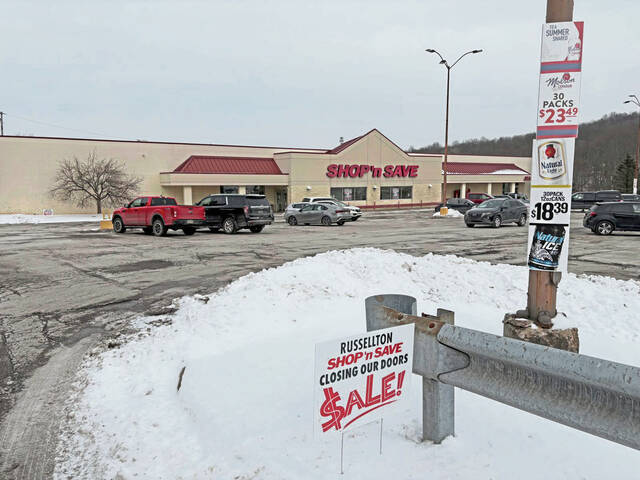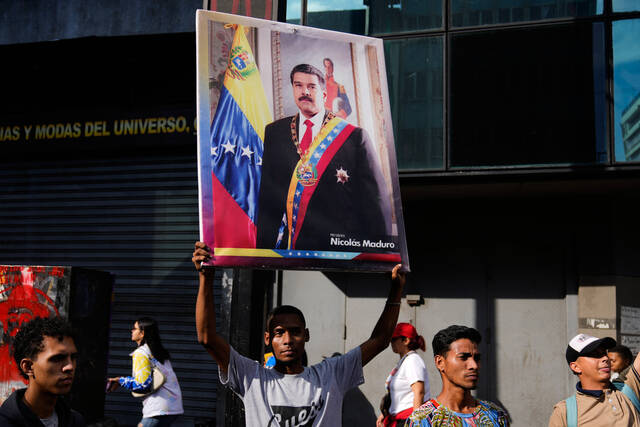Plenty of people driving past the Gulf Tower are wondering what’s going on at the tippy-top of the pyramid crowning the 44-story skyscraper in Downtown Pittsburgh.
Scaffolding is obscuring the view of the top of the stepped pyramid during the day and altering the look of the colored LED lights at night.
Though some folks are just now noticing the work in progress, it is actually taking place at the end of a two-year, million-dollar project to restore the building’s masonry. The masonry had previously been restored in the 1980s but the pyramid was not part of that process, according to Larry Walsh, chief operating officer of the building’s current owners, Rugby Realty Co.
“The pyramid has never been scaffolded and re-pointed and restored like we’re doing now. It’s never been done since 1932 when it opened. So we’re cleaning and restoring the masonry of the pyramid.”
What's going on at the top of the Gulf Tower? Check out my story at https://t.co/IYfLtEiX16.https://t.co/awYgG5MSt3 pic.twitter.com/pAwXy4PaSB
— Paul Guggenheimer (@PGuggenheimer) September 6, 2020
When the Gulf Tower was completed it was Pittsburgh’s tallest building. It held that title until 1971 when the U.S. Steel Tower opened. The building’s signature feature is the top of the tower, which is modeled after the Mausoleum of Halicarnassus in the style of a stepped pyramid. Over the course of 88 years, however, there has been considerable wear-and-tear on the Art Deco structure.
“We did a normal inspection of the building two or three years ago,” Walsh said. “When (workers) rappelled off of the building and climbed up on the pyramid back then, we noted that there were some significant masonry joints that were open and that needed to be addressed. It was part of the whole two-year project, and we just worked from the bottom up; and now we’re at the very top.”
From the early days of the skyscraper until the energy crisis of the early to mid-1970s, the pyramid was illuminated by panels of blue and orange-red neon lights. The colors were chosen from the insignia of the company the building was named for — Gulf Oil. The lights were designed to predict the weather for the next 12 hours. Steady blue meant cold and fair; flashing blue meant cold with snow; steady red meant warm and fair; and flashing red meant warm with rain.
As part of the effort to conserve energy, the weather forecasting colored lights were eventually limited to the pinnacle of the pyramid. But as of July 4, 2012, the entire pyramid once again became a weather beacon thanks to an automated system of colored LED lights that shine onto the cement steps. The installation was overseen by Walsh.
The current work should be completed by November, Walsh said. The LED lights are not part part of what’s currently being done, “so they will look the same as always when this is finished,” he said.





